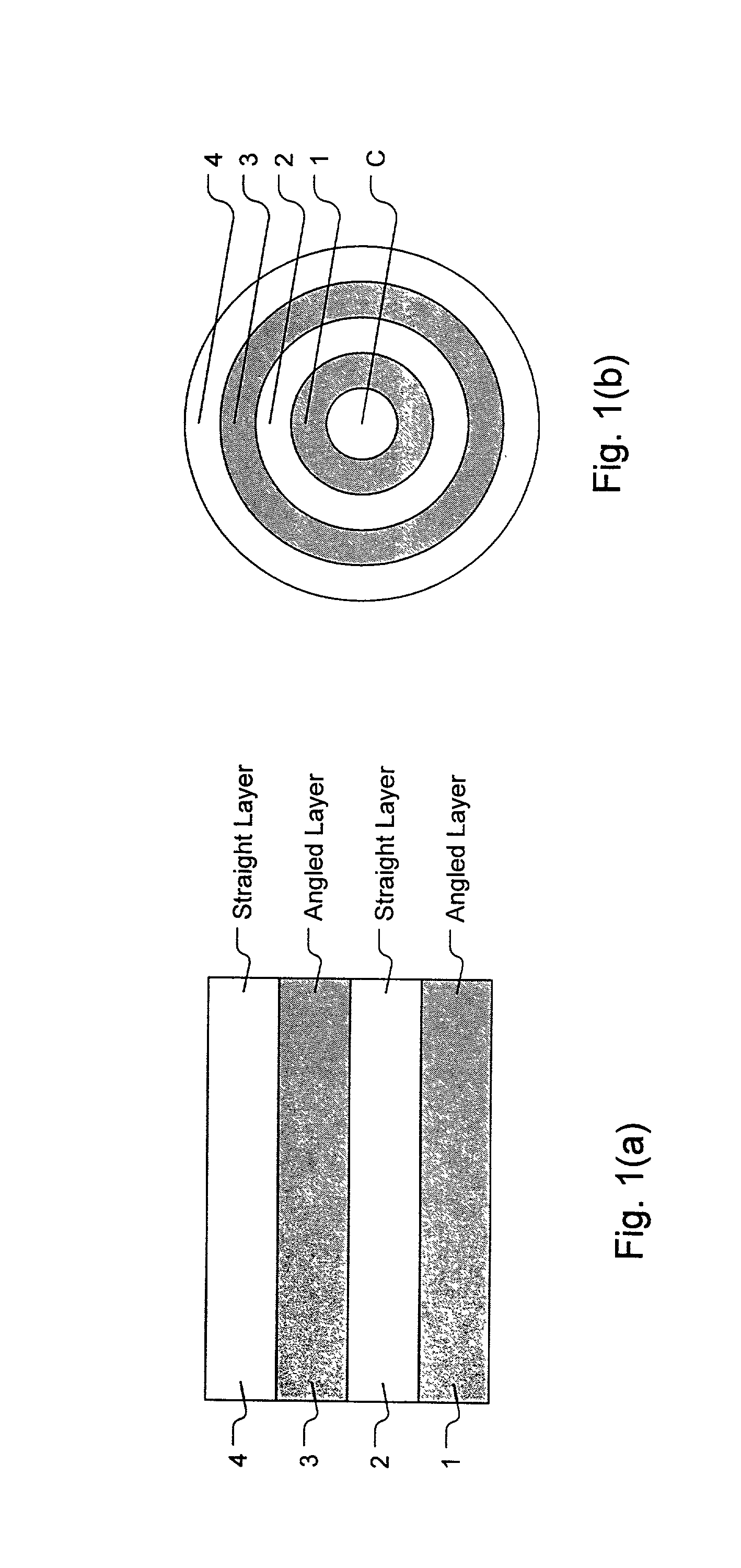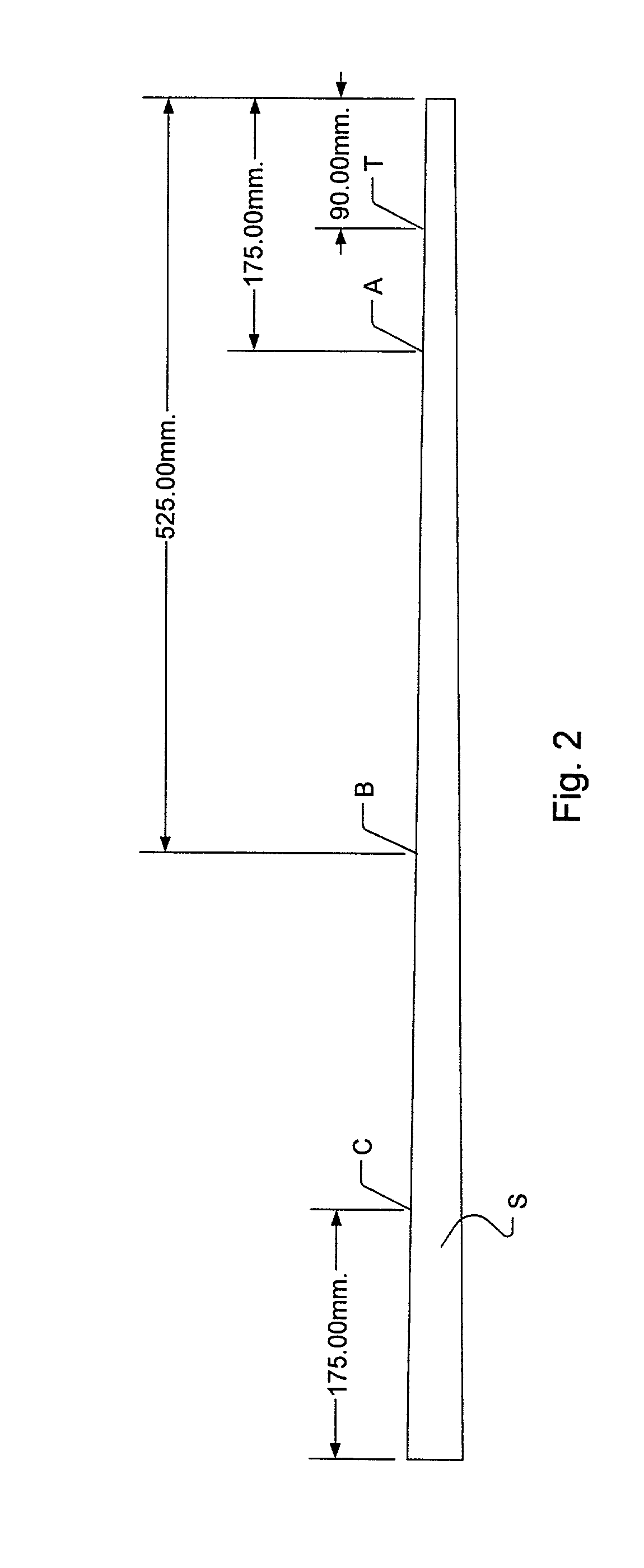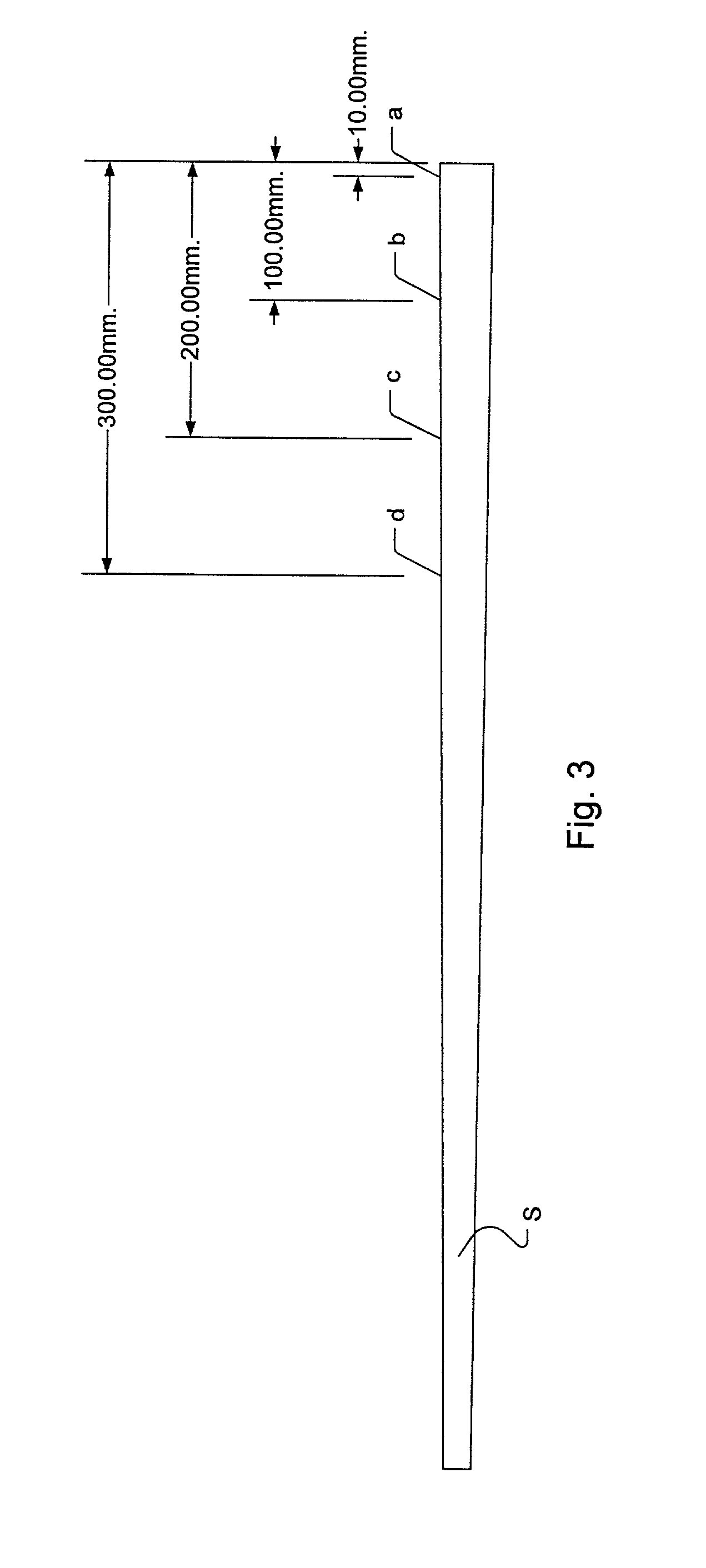Shaft for light-weight golf clubs
a golf club and shaft technology, applied in the field of golf club shafts, can solve the problems of low strength and rigidity, difficult handling, and undesirable reductions in strength and rigidity of reinforcing fibers with high elasticity, and achieve the effect of preventing longitudinal cracking of materials and enhancing rigidity and strength
- Summary
- Abstract
- Description
- Claims
- Application Information
AI Technical Summary
Benefits of technology
Problems solved by technology
Method used
Image
Examples
embodiment 1
[0054] The steps in forming a shaft , as shown in FIGS. 4(a)-4(h) and FIG. 5, are described below.
[0055] (1) A prepreg is formed from a single layer of fiber material (prepreg D in Table I). The fibers contained therein are oriented at 90 degrees relative to the longitudinal axis of the shaft. The prepreg is sheared at the small-diameter end and the large-diameter end to result in a trapezoidal shaped material as in FIG. 4(b). The trapezoidal shaped material is then wrapped around a metal mandrel to form a 90 degrees reinforcing layer of the shaft.
[0056] (2) Two prepregs are each formed from single layers of fiber material (prepreg A in Table I). The fibers contained in the first prepreg are oriented at an angle of +45 degrees relative to the longitudinal axis of the shaft. The first prepreg is sheared at the small-diameter end and the large-diameter end resulting in a trapezoidal shape. The fibers contained in the second prepreg are oriented at an angle of -45 degrees relative to t...
embodiment 2
[0077] In embodiment 2, the second angled layer is replaced with an angled layer consisting of two prepreg layers which are oriented at angles of + / -45 degrees respectively.
embodiment 3
[0078] In embodiment 3, the second angled layer is replaced with an angled layer consisting of two prepreg layers which are at angles of + / -60 degrees respectively.
PUM
 Login to View More
Login to View More Abstract
Description
Claims
Application Information
 Login to View More
Login to View More - R&D
- Intellectual Property
- Life Sciences
- Materials
- Tech Scout
- Unparalleled Data Quality
- Higher Quality Content
- 60% Fewer Hallucinations
Browse by: Latest US Patents, China's latest patents, Technical Efficacy Thesaurus, Application Domain, Technology Topic, Popular Technical Reports.
© 2025 PatSnap. All rights reserved.Legal|Privacy policy|Modern Slavery Act Transparency Statement|Sitemap|About US| Contact US: help@patsnap.com



